Abstract
Serum and urine concentrations of cephaloglycin (an orally absorbed derivative of cephalosporin C) were determined in normal volunteers and in patients. The in vitro activity of cephaloglycin was also studied. All strains of group A streptococci (Streptococcus pyogenes) and Diplococcus pneumoniae were inhibited by 0.4 μg of cephaloglycin per ml. Eighty per cent of the Staphylococcus aureus strains and about 50% of the Escherichia coli and Proteus mirabilis strains were inhibited by 1.6 μg of cephaloglycin per ml. Klebsiella-Aerobacter species were more resistant to cephaloglycin and 12.5 μg per ml was required to inhibit 70% of these strains. When single doses of 250, 500, or 1,000 mg of cephaloglycin were administered to fasting volunteers, a peak serum concentration of at least 0.5 μg per ml was achieved. A full breakfast did not interfere with absorption of cephaloglycin. Probenecid enhanced both the peak serum concentration and the duration of antibiotic activity in the serum. Serum concentrations of cephaloglycin were even higher in patients who were receiving repeated doses. The peak serum concentrations of cephaloglycin in all volunteers and patients were adequate to inhibit all strains of group A streptococci and D. pneumoniae. Many of the peak serum concentrations were adequate to inhibit some strains of S. aureus, E. coli, and P. mirabilis. Urine levels of cephaloglycin were high enough in all volunteers and patients to inhibit more than 90% of the E. coli and P. mirabilis strains and over 70% of the strains of Klebsiella-Aerobacter.
Full text
PDF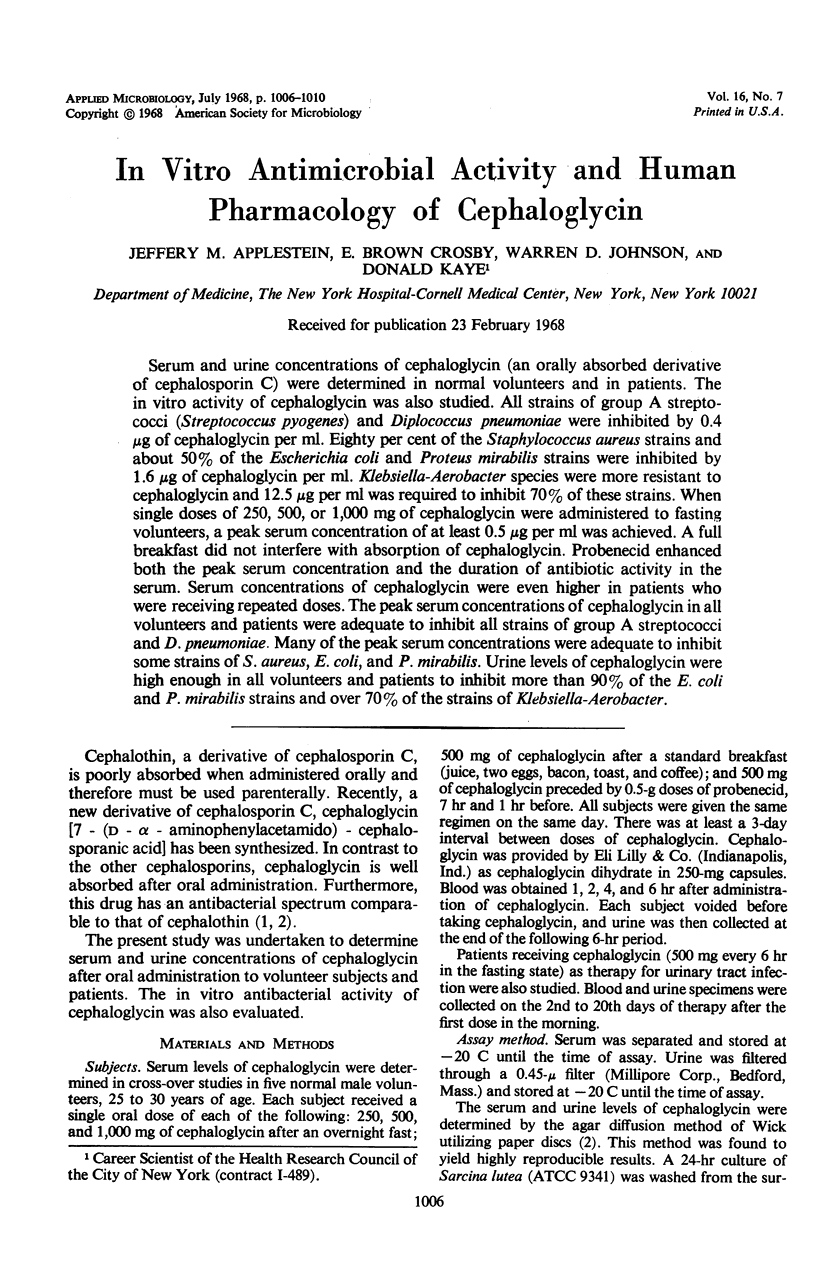
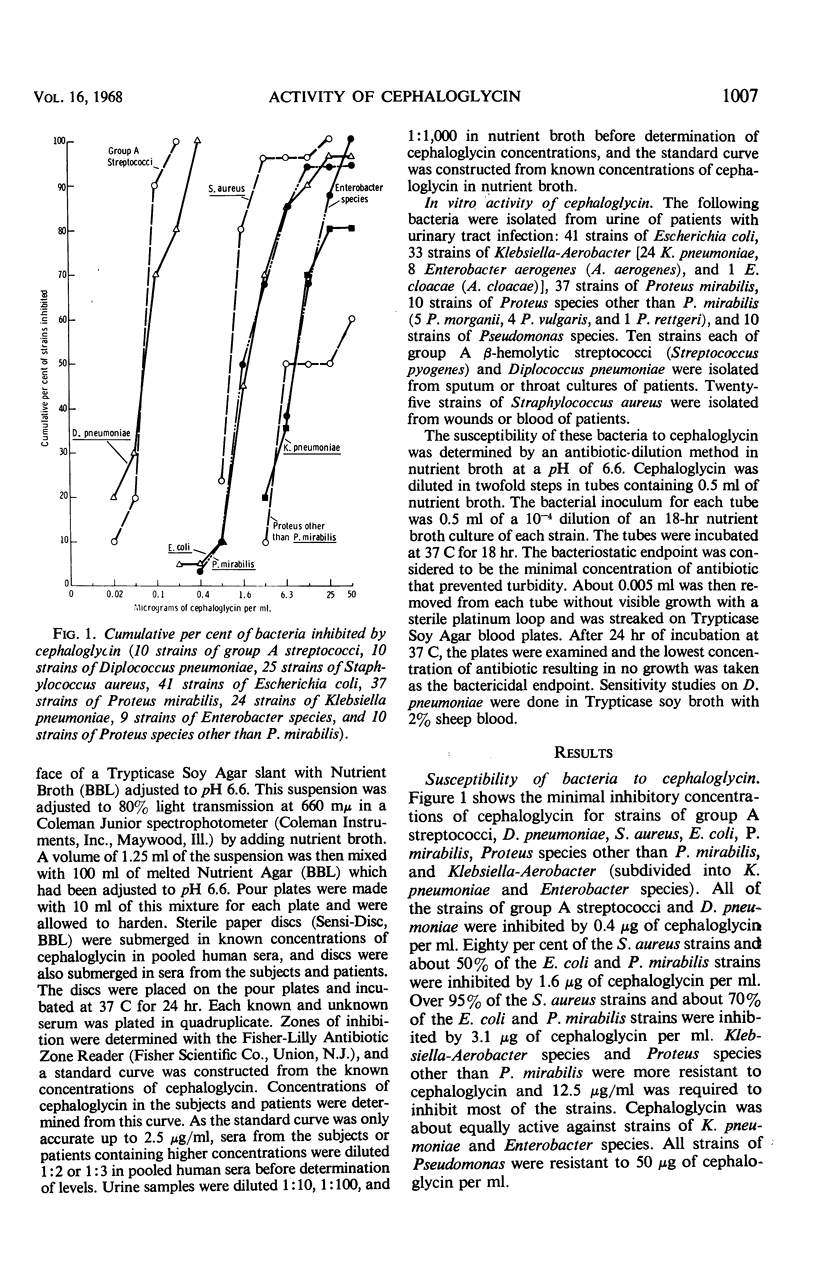
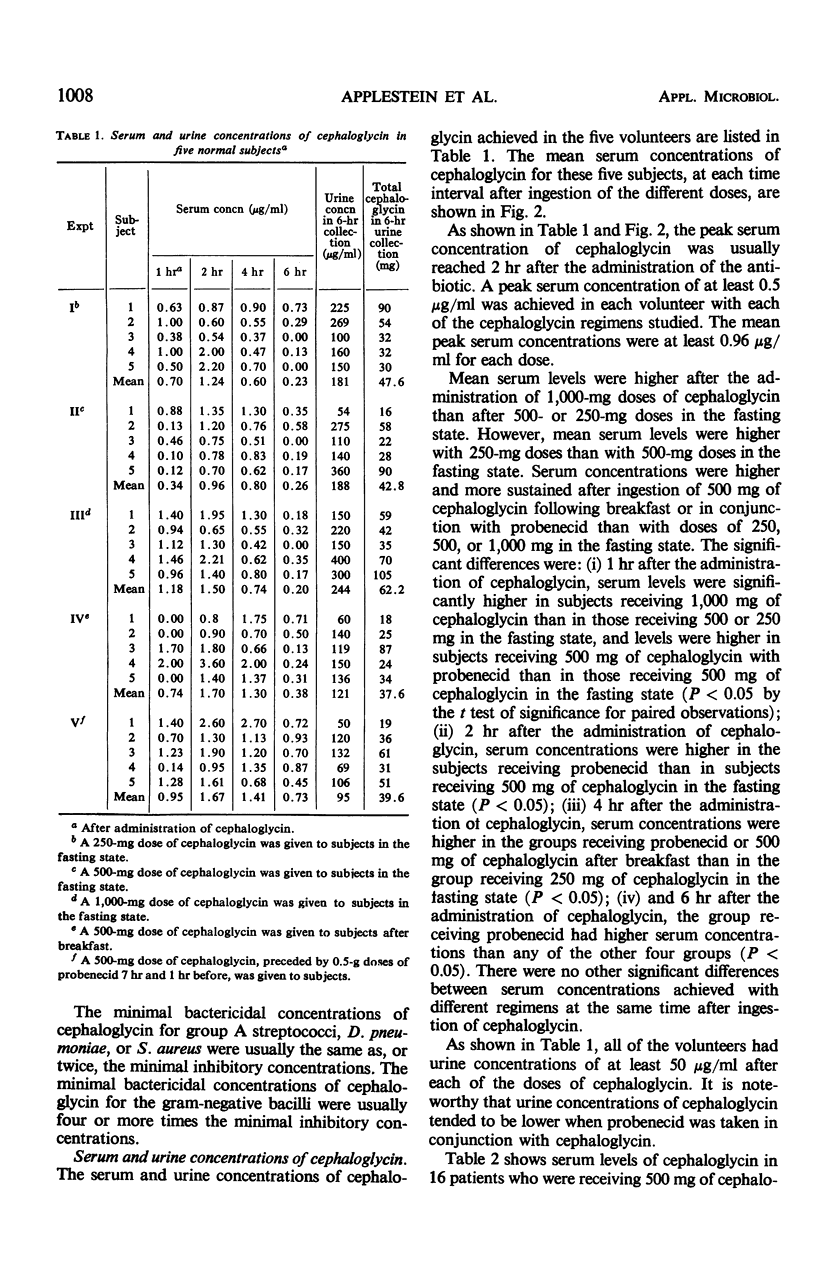
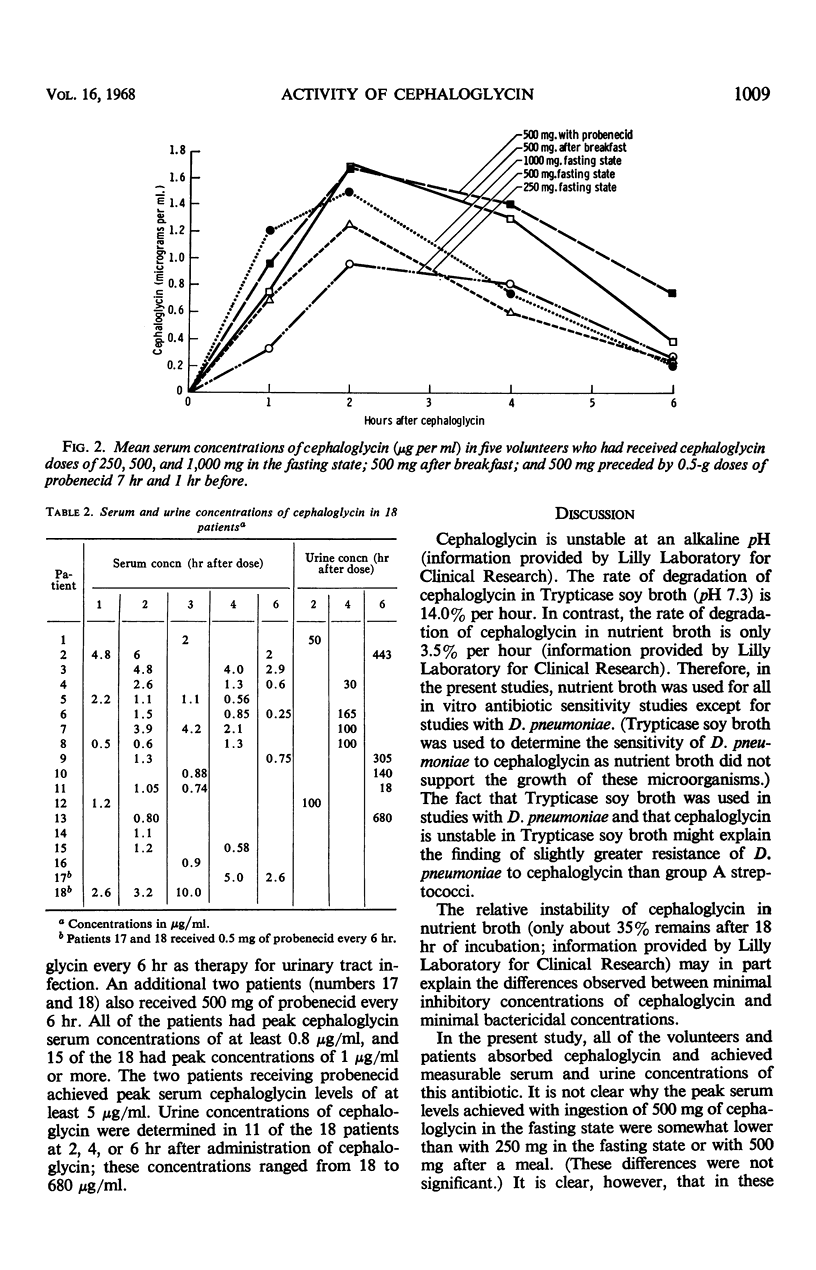
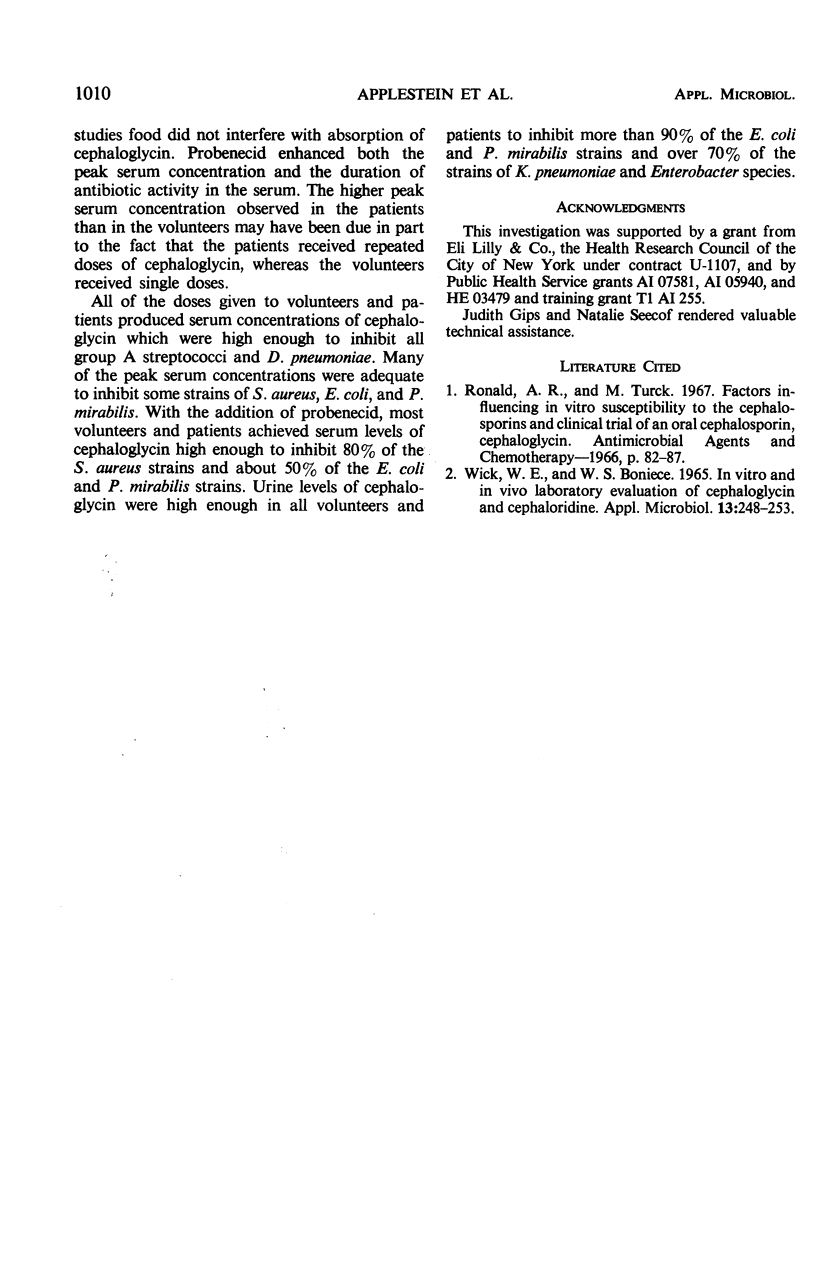
Selected References
These references are in PubMed. This may not be the complete list of references from this article.
- Ronald A. R., Turck M. Factors influencing in vitro susceptibility to the cephalosporins and clinical trial of an oral cephalosporin, cephaloglycin. Antimicrob Agents Chemother (Bethesda) 1966;6:82–87. [PubMed] [Google Scholar]
- WICK W. E., BONIECE W. S. IN VITRO AND IN VIVO LABORATORY EVALUATION OF CEPHALOGLYCIN AND CEPHALORIDINE. Appl Microbiol. 1965 Mar;13:248–253. doi: 10.1128/am.13.2.248-253.1965. [DOI] [PMC free article] [PubMed] [Google Scholar]


